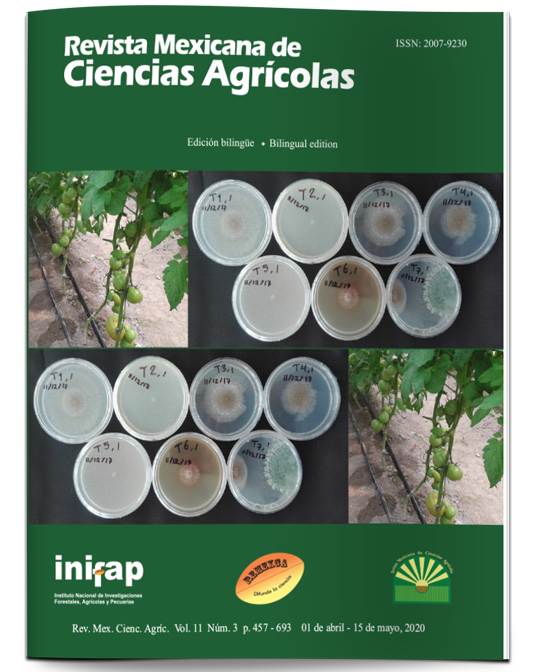Biotechnological potential of plant residues to produce Pleurotus ostreatus in rural areas of Campeche
DOI:
https://doi.org/10.29312/remexca.v11i3.1925Keywords:
agroecological strategy, mushroom fungus, plant residues, substrateAbstract
The objective of this study was to identify the main plant residues available in smallholder farming systems and use them as substrates for the cultivation of two strains of Pleurotus ostreatus (CP 50 and CP 753) under laboratory conditions. 184 questionnaires were applied in 13 rural communities in Campeche, Mexico. The availability of agricultural residues (t DM ha-1) in crops of corn, chihua pumpkin, x-pelon beans and tree species was evaluated. The selection of plant residues was evaluated in the culture of Pleurotus ostreatus strains. The variables evaluated in the Pleurotos culture were: colonization of the substrate, appearance of primordia, biological efficiency, colonization rate and production rate. The results were analyzed with descriptive statistics and an experimental design of random blocks. The availability (t DM ha-1) of the vegetable residues was corn (10.7), chihua pumpkin (14) and x-pelon beans (17.36). The CP-753 in bean stubble presented the shortest times with 12 and 15 days in colonization and appearance of primordia, while the CP-50 inoculated in pixoi fruit was the least efficient. The bean stubble substrate inoculated with the CP-753 strain presented the best biological efficiency with values of 102.75 ±7.48 and a production rate of 5.13 g day-1. Most of the producers surveyed have an interest in using the plant residues generated in the lots or backyards as productive alternatives using agroecological strategies that contribute to the generation of economic income for much of the year.
Downloads
Published
How to Cite
Issue
Section
License
The authors who publish in Revista Mexicana de Ciencias Agrícolas accept the following conditions:
In accordance with copyright laws, Revista Mexicana de Ciencias Agrícolas recognizes and respects the authors’ moral right and ownership of property rights which will be transferred to the journal for dissemination in open access. Invariably, all the authors have to sign a letter of transfer of property rights and of originality of the article to Instituto Nacional de Investigaciones Forestales, Agrícolas y Pecuarias (INIFAP) [National Institute of Forestry, Agricultural and Livestock Research]. The author(s) must pay a fee for the reception of articles before proceeding to editorial review.
All the texts published by Revista Mexicana de Ciencias Agrícolas —with no exception— are distributed under a Creative Commons License Attribution-NonCommercial 4.0 International (CC BY-NC 4.0), which allows third parties to use the publication as long as the work’s authorship and its first publication in this journal are mentioned.
The author(s) can enter into independent and additional contractual agreements for the nonexclusive distribution of the version of the article published in Revista Mexicana de Ciencias Agrícolas (for example include it into an institutional repository or publish it in a book) as long as it is clearly and explicitly indicated that the work was published for the first time in Revista Mexicana de Ciencias Agrícolas.
For all the above, the authors shall send the Letter-transfer of Property Rights for the first publication duly filled in and signed by the author(s). This form must be sent as a PDF file to: revista_atm@yahoo.com.mx; cienciasagricola@inifap.gob.mx; remexca2017@gmail.
This work is licensed under a Creative Commons Attribution-Noncommercial 4.0 International license.



